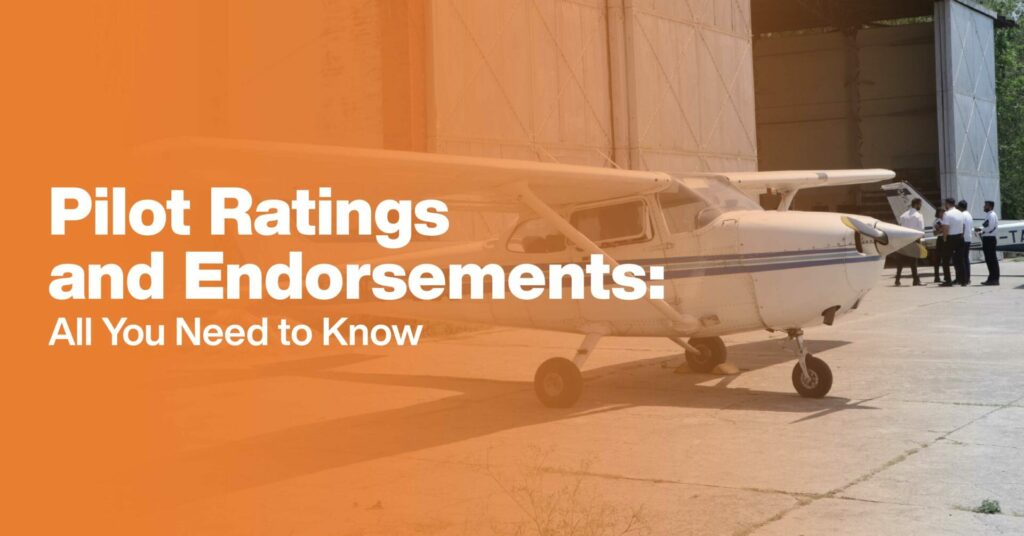Have you ever wondered what it takes to become a pilot? There are many requirements, one of which is obtaining pilot ratings and endorsements. But what exactly are these and how do they differ? In this article, we’ll dive into the world of pilot ratings and endorsements, and how they can help you achieve your aviation dreams.
What are Pilot Ratings and Endorsements?
Pilot ratings and endorsements are certifications that allow a pilot to fly different types of aircraft or perform specific tasks. Ratings indicate a pilot’s level of expertise, while endorsements allow pilots to fly in specific conditions or situations. These certifications are obtained through rigorous training and testing and are required by aviation authorities worldwide.
Ratings are typically based on the type of aircraft or flight operations that the pilot is qualified to perform, such as private pilot, instrument, multi-engine, and commercial ratings. Endorsements are often required for night flying, high-altitude operations, certain types of airspace, passenger-carrying, solo flights, and complex aircraft. Both ratings and endorsements require specialized training and testing to ensure that pilots have the necessary knowledge and skills to operate the aircraft safely in these specific conditions.
What is Type Rating in Aviation?
A type rating is a critical certification that allows pilots to operate a specific type of aircraft, such as the Boeing 737 or the Airbus A320. In India, type ratings are classified into four categories: Type 1, Type 2, Type 3, and Type 4. Each rating has specific requirements, and pilots must complete rigorous training and testing to obtain the certification. The certification process typically involves ground school, simulator training, and in-flight training, followed by a series of tests to demonstrate the pilot’s proficiency in operating the specific aircraft. Obtaining a type rating is crucial for pilots to fly specific aircraft and meet regulatory requirements, ensuring safe and efficient air travel.
Type Ratings in India
The different types of Type Ratings in India are listed below.
Type 1
Type 1 is the most basic type rating and is required for single-engine piston aircraft. This rating is the certification required for all single-pilot operations of turbojet-powered airplanes. This rating is mandatory for pilots who want to operate jet aircraft in India.
Type 2
is required for pilots who wish to operate multi-engine piston-powered airplanes, as well as all multi-engine turbine-powered helicopters. This rating allows pilots to operate larger and more complex aircraft.
Type 3
Type 3 rating is required for pilots who wish to operate single-engine turbine-powered airplanes with an MTOW of less than 5700kg. This rating allows pilots to operate single-engine jet aircraft and turboprops.
Type 4
Type 4 is required for turbine-powered aircraft weighing more than 5700 kg. Pilots must undergo extensive ground training, simulator training, and flight training before obtaining a type rating. Type 4 rating is required for pilots who wish to operate all other types of aircraft not covered under Type 1, Type 2, or Type 3. This rating covers a wide range of aircraft, including single-engine piston-powered airplanes, gliders, and balloons.
Pilot Endorsement in Aviation
A pilot endorsement is a certification that allows a pilot to perform specific tasks, such as flying in certain weather conditions or performing aerobatics. In India, there are several types of pilot endorsements, including Type 1, which allows pilots to fly aircraft with retractable landing gear, and Type 2, which allows pilots to fly aircraft with a constant-speed propeller. Other endorsements include high-performance aircraft, complex aircraft, tailwheel aircraft, and gliders.
Garg Aviation and Pilot Ratings/Endorsements
Garg Aviation can play a vital role in helping pilots obtain the necessary ratings and endorsements. We are able to guide you for ground training, simulator training, and flight training, as well as access to certified flight instructors. Students can choose from various programs, ranging from private pilot training to commercial pilot training, and can obtain type ratings and endorsements as part of their training.
Conclusion
Becoming a pilot is a challenging yet rewarding experience, and obtaining pilot ratings and endorsements is a crucial step in achieving this goal. With the right training and dedication, anyone can obtain these certifications and pursue a career in aviation. If you’re interested in becoming a pilot, consider enrolling in a flying school and embarking on this exciting journey.
We encourage you to share your thoughts and experiences in the comments section below.
Frequently Asked Questions
Get answers to a few questions regarding types of pilot ratings and endorsements.
1. What are the requirements for obtaining a pilot rating?
To obtain a pilot rating, pilots must meet certain minimum requirements, such as completing a certain number of flight hours and passing a written and practical exam. The exact requirements vary depending on the type of rating and the aviation authority.
2. What is a flight review, and how often is it required for pilots to complete it?
A flight review is a certification that confirms a pilot’s competency and proficiency. Pilots must complete a flight review every two years to maintain their certification.
3. Do additional ratings and endorsements impact a pilot’s job prospects?
Yes, obtaining additional ratings and endorsements can improve a pilot’s job prospects by demonstrating their versatility and expertise.
4. What is a glider endorsement, and what is required to obtain one?
A glider endorsement allows pilots to fly gliders. To obtain a glider endorsement, pilots must complete a minimum of 10 hours of flight training, including at least 20 glider flights. They must also pass a written exam and a flight test.
5. How long does a type rating remain valid?
In India, a type rating remains valid for one year. Pilots must complete recurrent training every year to maintain their type rating.

